- Villa search

- Canaries
- Caribbean
- Croatia, Bulgaria and Hungary
- Cyprus
- Florida
- France and Corsica
- Greece
- Italy
- Lakes and Mountains
- Madeira
- Malta and Gozo
- Portugal
- South Africa
- Spain - Balearics
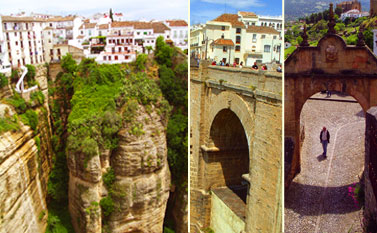
Ronda, above the El Tajo gorge | One of the bridges across the gorge | Stunning archtecture of Ronda
When we went out for dinner, we were able to have a few drinks without worrying about driving and Spain’s tough drink-drive laws: a leisurely stroll through cool, quiet streets got us back to our holiday home. At La Taberna de Lucia, a popular tapas bar on Calle Caridad, our waiter, Cique – short for Enrique – told us he’d worked all over the country, but liked Estepona because it was “muy tranquilo”, a rare thing on such a busy coast.
'The town's sweeping beach, Playa de la Rada, was five minutes' walk away through plazas and streets lined with palms trees'
A visit to the hill-top city of Ronda, an hour’s drive into the mountains behind Estepona, is a must. It doesn’t have palaces to rival those at the Alhambra in Granada, but its dramatic location and classic, intoxicating Andalucian mix of Moorish and Christian architecture is a treat.
Ronda straddles the 330ft El Tajo gorge. Each of its rulers felt the need to build a bridge across this gaping chasm carved by the River Guadalevin, so there’s a Roman, Arab, and ‘new’ bridge, the Puente Nuevo, built in 1793. It’s the tallest – it’s almost 400ft above the gorge floor – and the views from it are sensational.
Moorish and Christian influences battle for your attention. Minarets, arches, 13th century Arab baths and imposing medina gates and walls stand alongside convents, churches, plazas and palaces – many of them built on top of mosques.
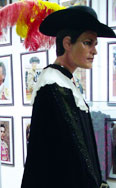
Exhibits at the bullfighting museum in Estepona
The mountains around Ronda were notorious hide-outs for smugglers, thieves, robbers and other low-lifes. The Bandit Museum (Museo del Bandoleros) is swashbuckling fun. The exhibition, which has guns dating back to the 1800s, explains how the bandits who roamed the provinces of Málaga and Cádiz until well into the first half of the 20th century symbolised the poor man’s plight in old Andalucia, and were vilified and romanticised in equal measure. The last of them – Pasos Largos, or ‘big steps’ – was killed in a cave shoot-out with police in 1934.
If you want to break up the hour-long drive between Estepona and Ronda, have a picnic or take a stroll in the 70-square-mile Parque Natural Sierra de las Nieves. This mountainous, now bandit-less, park to the south east of Ronda is home to a rich variety of flora and fauna including Iberian ibex, golden eagles and otters, and for tree-lovers, the rare Spanish Fir, which grows only in Andalucia and northern Morocco.
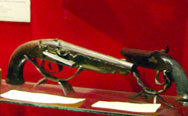
Weapons museum
Ronda claims to be the home of Spanish bullfighting, a controversial spectacle but one which remains an inherent and popular part of Andalucian culture. Ronda’s bullring, opened in 1785, is one of the oldest and largest of Spain’s 400 stadiums.
It has a museum which displays the weapons used by bullfighters, matador outfits and mounted bull heads, and tells the history of the sport. Though the Romans and Moors may have practised versions of it, in Ronda in the 18th and 19th centuries the Romero family established the basics of modern bullfights, in which matadors fight on foot rather than on horseback – as they do in Portugal – and use a cape or muleta both to demonstrate their mastery of the animal and their bravery by getting close to it.
Estepona also has a bullring and museum – just off Avenida del Carmen, behind the marina.
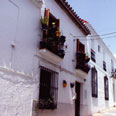
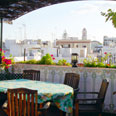
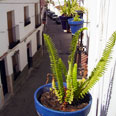
Where we stayed – We stayed in the Estepona Town House, a fully-renovated Andalucian house on a quiet road in the old town. Extremely comfortable and well furnished, it sleeps six and has a roof terrace. The owner, David Frayne, sends guests a pack with information on the area and directions from the airport. His website has useful tips for things to do in the area.
Tel 07790 636884 or 01273 884884
How we got there – easyJet fly to Malaga from Gatwick, Luton, Stansted, Bristol, Newcastle, Liverpool, Nottingham East Midlands, Belfast and Glasgow, with prices from £22.99 one-way and £40.98 return (including taxes).
home | destinations and editorial | villa search | property for sale | car hire | flights | services
villaseek blog | contact villaseek | links and resources | advertise your villa© Dune Root Ltd and Villaseek.com 2012 - Caribbean
- Canaries